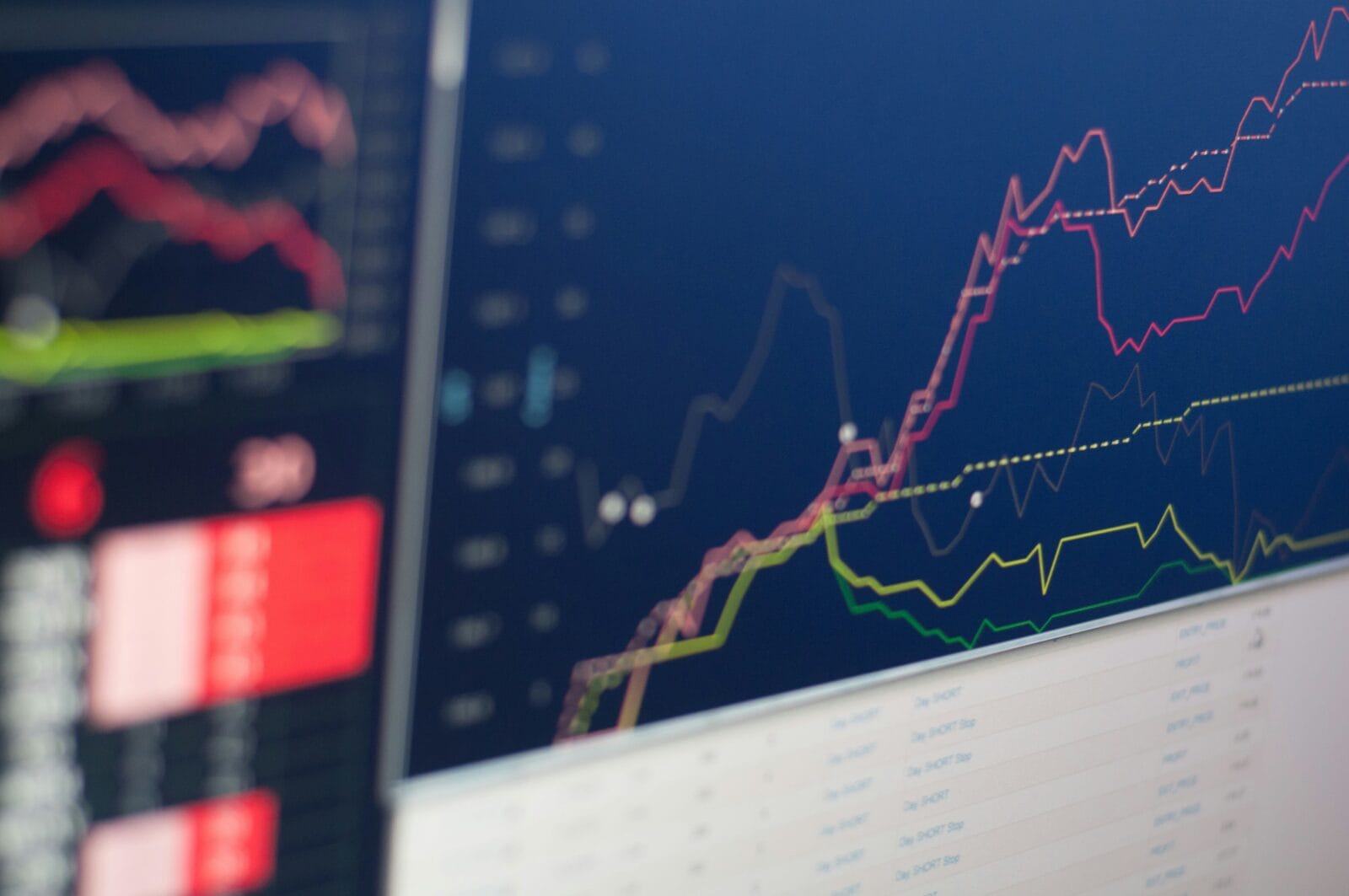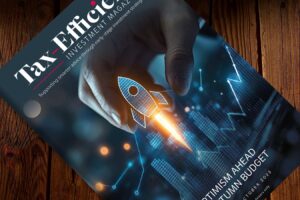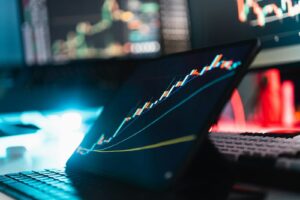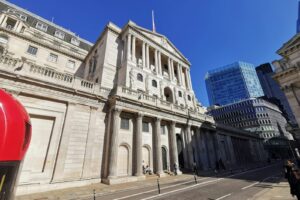In a move that underscores its commitment to economic stability over political pressure, the Federal Reserve opted to hold interest rates steady this week—defying calls from former President Donald Trump to slash borrowing costs. The decision, closely watched by global markets, signals the central bank’s cautious approach as it navigates persistent inflation concerns, political crosswinds, and growing speculation over who might lead the institution next. While the Fed’s pause offers a degree of reassurance to investors, it also raises fresh questions about the future direction of monetary policy—and whether it can remain insulated from the increasingly charged political landscape.
Industry experts and professionals have shared their views below:
Lindsay James, investment strategist at Quilter comments:
“Amidst the geopolitical and economic chaos, the Federal Reserve has opted to keep its foot off the pedal and continue to hold rates. The move – or lack thereof – seemed inevitable given President Trump’s tariffs are still yet to be finalised but look likely to weigh further on the economy in the coming months, particularly as the 90 day pause nears its end, and the turmoil in the Middle East remains unpredictable.
“In the March release of the policy makers’ dot plot, two more rate cuts were anticipated this year. Now, while the median remains the same for 2025, it seems progress towards lower interest rates could slow even more as policy makers were split over whether there would be no cuts or even as many as three. The Fed’s ‘slow and steady’ approach could spark further tension with Donald Trump, whose pressure to cut rates has had little effect.
“Trump believes lower inflation is reason enough for the central bank to cut rates, but while inflation came in slightly softer than expected in the 12 months to May, it was still a rise that pushed it even further away from the Fed’s 2% target. Similarly, core inflation remained stuck at 2.8%, adding pressure to the Fed’s dual mandate balancing act between maintaining price stability and managing employment risks.
“Ultimately, the Federal Reserve will be keeping a close eye on the risks of higher prices in the coming months as the real impacts of tariffs start to play out, as well as how the labour market is holding up. In its latest projections, the Fed is gearing up for lower growth, higher unemployment and higher interest rates than had been previously hoped. Inflation is likely to climb higher yet, but if the jobs market weakens considerably without a spike in inflation, then the Fed may find itself backed into a corner and a cut sooner rather than later may become inevitable.
“Trump has repeatedly fired insults at Jerome Powell, and we can expect today’s hold on rates to further ruffle his feathers. While Trump has confirmed he will not look to remove Powell before the end of his term – a move that would likely be met with legal challenge anyway – time will tell whether he looks to position a ‘shadow’ Chair in an attempt to sway policy. Investors will be watching closely to assess how this progresses and what impact it may have on markets.”
Garry White, Chief Investment Commentator at Charles Stanley, comments: “The Federal Reserve (Fed) remains cautious about declaring victory over the recent prolonged surge in inflation, particularly with new tariffs from the Trump administration threatening to reignite price pressures later this year.
“A cut in interest rates at this stage would have been unwise, given the persistent nature of inflation following the post-Covid spike. Concerns about the economy are genuine but remain, for now, just that – concerns. While business and consumer sentiment may have dipped, the US economy continues to show resilience, with steady job growth and robust consumer spending. Although the Fed will be weighing this disconnect between sentiment and economic data, there is currently no compelling evidence in the data to warrant immediate action. Of key importance will be the statements made at the upcoming press conference, as Chair Jerome Powell seeks to signal the path ahead.”
Daniele Antonucci, a Quintet Private Bank (parent of Brown Shipley) on Fed rates and growth outlook for US:
“That the Fed left rates unchanged isn’t surprising. More relevant is that the monetary policymakers downgraded the growth outlook for the US, due to elevated uncertainty.
The global order is becoming more fragmented and regional, a key shift from US-centric geopolitics to a more multi-polar world.
Trade uncertainty remains high and is causing market volatility, but there are also signs of pragmatism, which provides some relief to investors.
Our base case remains one where economic growth and inflation slow. But, unless a full-blown ‘trade war’ materialises, the global economy should avoid a recession and a significant spike in prices.
Interest rate cycles are also diverging. The Bank of Japan is raising interest rates. Due to the US trade tariffs, the Fed is likely facing the toughest trade-off between the risks of fuelling inflation and negatively impacting growth.
We think downside risks to growth will eventually dominate if sweeping tariffs are put in place, prompting the US central bank to lower interest rates.
However, the bar to cut rates will be higher for the Fed than the ECB and BoE, given more pronounced inflation risks.
Moreover, a high level of government debt and a large budget deficit in the US could keep US Treasury yields more elevated.
The 90-day tariff rollback between the US and China and the temporary suspension of sweeping tariffs to the European Union have helped stabilise markets while attempts to strike trade deals continue.
But this isn’t the end of the story. The pause in tariffs and some possible trade deals are obviously key developments.
However, underlying trade tensions remain, as shown by the recent increase in US tariffs on steel and aluminium.
The stagflationary impulse that defined the past six months—slower growth with higher prices—has also not faded entirely.
That said, US policy is now shifting from tariffs on the rest of the world to domestic deregulation and tax cuts.
The question is whether the positive impulse to growth from tax cuts and spending will offset the negative drag from market worries about the sheer size and trajectory of US government debt.
Likely, both will be at the forefront of investors’ minds, and we want to position portfolios to capture the former and mitigate the latter.
We continue to believe that the US dollar is overvalued and likely to weaken further. In the near term, foreign investors also seem to have a lower appetite to buy dollar-denominated assets.
To further reduce our dollar exposure, we’ve sold some US equities and reallocated to both emerging markets and low-volatility developed market equities.
Emerging markets are attractively valued, enhance portfolio diversification and benefit from dollar weakness. Low-volatility equities tend to outperform in ‘down markets’, dampening portfolio volatility if uncertainty were to increase again as we approach the end of the 90-day tariff pause in early July.
We continue to underweight US investment-grade bonds, as fiscal concerns might negatively impact Treasuries.”
Robert Lind, Economist at Capital Group said: “The Federal Reserve’s decision to hold rates underscores the delicate balance it faces amid persistent inflation, slowing U.S. growth, and heightened policy uncertainty. While tariffs and geopolitical tensions have weighed on sentiment and activity, we believe this is a moment to remain focused on long-term fundamentals. History shows that markets can adapt and recover, even in the face of significant disruption. In this environment, we continue to take a measured approach—prioritizing time in the market over timing the market—and remain anchored in disciplined, bottom-up analysis to navigate through volatility and identify enduring opportunities.”
Nigel Green, CEO of deVere Group, says: “Trump wants a full-point rate cut to offset the damage from his own tariffs. But if the Fed delivers prematurely, markets will punish that kind of political submission. Long yields could spike, and the cost of capital could rise across the board.”
May inflation data shows some easing—headline CPI dipped to 2.4% and core to 2.8%—but it is not enough for the Fed to justify a move. Wage growth remains resilient, household consumption is firm, and services inflation is still uncomfortably sticky.
“The Fed is right to stay on hold,” says Nigel Green. “The disinflation trend is fragile, the tariff shock is still working its way through, and rate cuts in this environment would send the wrong message.”
Tensions hit a new peak on Wednesday morning, just hours before the central bank’s decision, when President Trump launched a personal attack on Fed Chair Jerome Powell during an impromptu press briefing on the South Lawn of the White House.
Speaking beside a new row of flagpoles unveiled as part of a symbolic national display ahead of what the president described as a “potential war with Iran,” Trump again blamed the Fed for slowing the economy and accused Powell of incompetence.
“We’re doing well. Well as a country, if the Fed would ever lower rates, you know, we’d buy debt for a lot less,” he told reporters. “Do you ever have a guy that’s not a smart person and you’re dealing with him and you have to deal? He’s not a smart guy.”
deVere points to sharp movements in the yield curve as a warning sign. The 2-year/30-year spread is now at its widest since early 2022. Investors are demanding more compensation to hold long-dated Treasuries amid growing concern about inflation credibility, surging debt issuance, and the creeping politicisation of the Fed.
“What we’re seeing now is a re-pricing of long-term risk,” says Green. “If the Fed signals it’s willing to bow to political pressure, it damages its ability to anchor expectations—and yields will move accordingly.”
The decision to hold comes against the backdrop of Trump’s increasingly aggressive demands for looser monetary policy and his influence over the next central bank leadership decision. Powell’s term ends in May, and markets are already positioning for a successor who may align with Trump’s low-rate preference.
“There’s growing conviction among investors that Powell will be replaced by a Trump ally—someone far more comfortable with slashing rates,” says the deVere CEO.
“That’s why we’re seeing futures traders amass record bets on cuts from mid-2025 onward. This is no longer just about the data—it’s about who controls the Fed next.”
deVere warns this shift could drive speculative positioning, trigger bond market volatility, and introduce a fresh wave of uncertainty into global asset pricing.
“This is becoming a strategy,” says Nigel Green. “Investors are beginning to front-run a potential political pivot in monetary policy. That’s a real risk—and one that requires attention now, not later.”
Trump’s new tariffs—branded “Liberation Day” by his administration—are also adding to the Fed’s dilemma. A federal court last week allowed them to remain in force while a broader legal review unfolds.
“These tariffs are inherently inflationary,” says the chief executive. “They act like a consumption tax, hit supply chains, and reduce household spending power. They are fiscal tightening tools disguised as economic nationalism—and they are making the Fed’s job more complex.”
Looking ahead, deVere sees a potential rate cut in the autumn, but insists the bar remains high.
“September is still possible—but it would take a lot to get there,” explains Nigel Green.
“We’d need a decisive drop in core inflation, weaker jobs data, and some de-escalation of the tariff effect. Until then, the Fed will stay cautious.”
In the meantime, deVere advises investors to prepare for more volatility and to prioritise global balance and yield resilience.
“Portfolios need to be built around assets with pricing power, international reach, and low exposure to rising real rates,” says the deVere CEO.
“Markets are shifting fast—and those relying on politically driven cuts may find themselves on the wrong side of that move.”
He concludes: “The Fed held steady today. That was the right call for now. But what comes next may be less about economic logic—and more about who holds the pen.”
By Richard Flynn, Managing Director at Charles Schwab UK
“As anticipated, the Federal Reserve held rates unchanged at 4.25-4.5%. The larger story here is that there is a clear misalignment between political expectations and monetary policy objectives, as the Fed continues to maintain a wait-and-see approach to gauge the downstream impact of tariffs on the broader economy before taking action. Last week’s better-than-expected Consumer Price Index (CPI) data did little to support the case for a rate cut, disappointing policy doves, including the President, who has repeatedly called for a sharp 100 basis points cut to ease pressure on US debt repayments.
While the May CPI print came in slightly below expectations, at 2.4% versus the forecasted 2.5%, and the labour market remains resilient, the central bank appears to be wary of emerging risks. The 10% baseline tariffs, along with steeper levies on Chinese imports, are expected to drip feed into the economy over the coming months and are likely to be inflationary. Compounding this, the Personal Consumption Expenditures (PCE) price index, the Fed’s preferred measure of inflation, is also anticipated to rise from the 2.1% recorded in April 2025.
Markets will also be closely monitoring reactions from Washington, as President Trump continues to increase pressure on the Fed Chair to act. Investors will be watching for signs of the central bank’s independence being upheld. Any escalation in this tug of war could add a further risk premium to US assets.”















